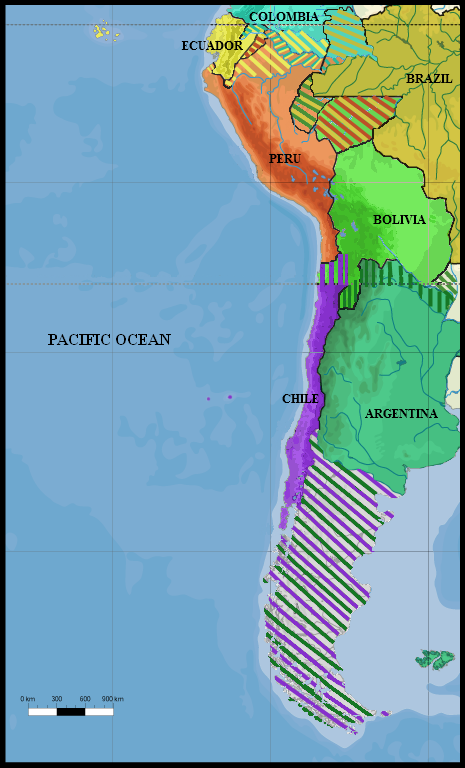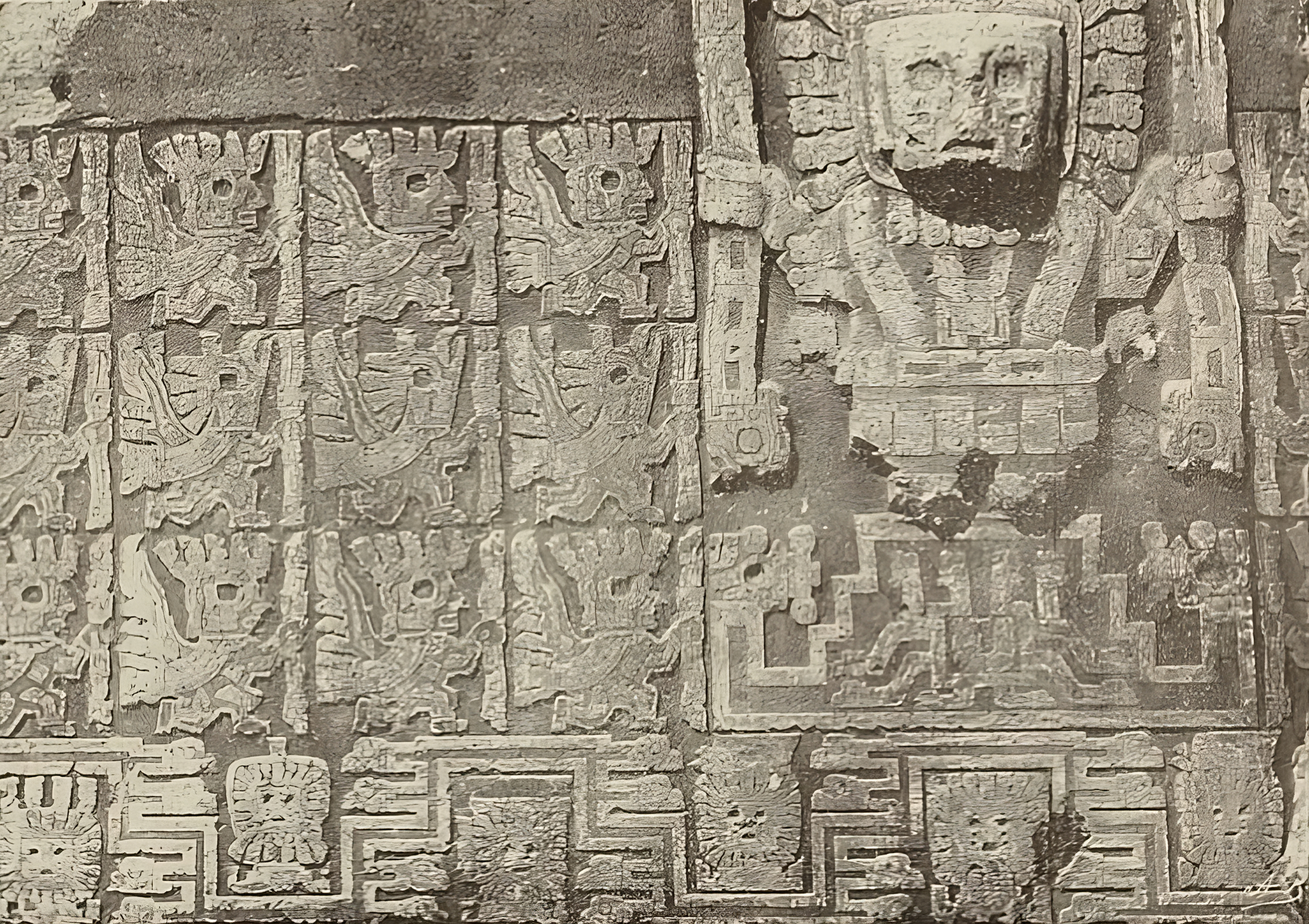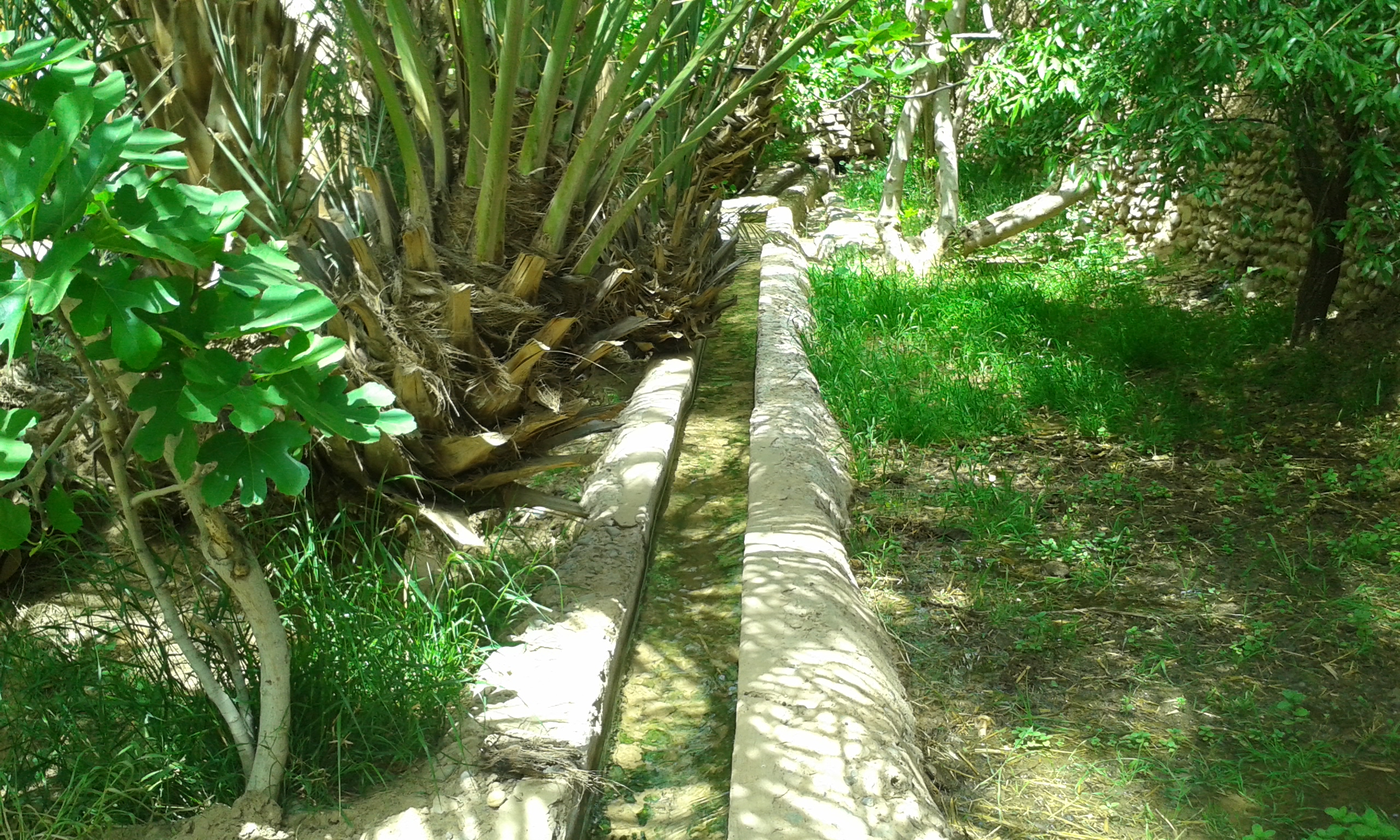|
San Pedro De Atacama
San Pedro de Atacama is a Chilean town and commune in El Loa Province, Antofagasta Region. It is located east of Antofagasta, some 106 km (60 mi) southeast of Calama and the Chuquicamata copper mine, overlooking the Licancabur volcano. It features a significant archeological museum, the R. P. Gustavo Le Paige Archaeological Museum, with a large collection of relics and artifacts from the region. Native ruins nearby attract increasing numbers of tourists interested in learning about pre-Columbian cultures. History San Pedro de Atacama grew, over centuries, around an oasis in the Puna de Atacama, an arid high plateau. Its first inhabitants were the Atacameños, who developed basketworks and ceramic pottery crafts that can be now be appreciated by tourists in the several souvenir shops as typical products of San Pedro de Atacama. There is debate over what degree of connection the Atacameños had to the Tiwanaku culture. It was part of Bolivia since independence from ... [...More Info...] [...Related Items...] OR: [Wikipedia] [Google] [Baidu] |
List Of Towns In Chile
This article contains a list of towns in Chile. A town is defined by Chile's National Statistics Institute (INE) as an urban entity possessing between 2,001 and 5,000 inhabitants—or between 1,001 and 2,000 inhabitants if 50% or more of its population is economically active in secondary and/or tertiary activities. This list is based on a June 2005 report by the INE based on the 2002 census, which registered 274 towns across the country, however only 269 of them are shown here. (The higher number is based on the number given in the regional summary provided by the INE report. The lower number is based on a manual count of the report. The discrepancies are found in the Valparaíso Region (report: 31 / manual count: 28), the O'Higgins Region (report: 39 / manual count: 38) and the Los Ríos and Los Lagos Region combined (report: 31 / manual count: 30).) [...More Info...] [...Related Items...] OR: [Wikipedia] [Google] [Baidu] |
Antofagasta
Antofagasta () is a port city in northern Chile, about north of Santiago. It is the capital of Antofagasta Province and Antofagasta Region. According to the 2015 census, the city has a population of 402,669. Once claimed by Bolivia following the Spanish American wars of independence, Antofagasta was captured by Chile on 14 February 1879, triggering the War of the Pacific (1879–83). Chilean sovereignty was officially recognised by Bolivia under the terms of the 1904 Treaty of Peace and Friendship. The city of Antofagasta is closely linked to mining activity, being a port and the chief service hub for one of Chile's major mining areas. While silver and saltpeter mining have been historically important for Antofagasta, since the mid-19th century copper mining is by far the most important mining activity for Antofagasta, fueling a steady growth in the areas of construction, retail, hotel accommodations, population growth and skyline development until the end of the 2000 ... [...More Info...] [...Related Items...] OR: [Wikipedia] [Google] [Baidu] |
Battle Of Río Grande
The Battle of Río Grande was a minor military engagement that took place on 10 September 1879, during the War of the Pacific. A picket of Chilean soldiers and a Bolivian montonera clashed in Rio Grande, around San Pedro de Atacama. Bolivians are defeated, which eliminates local resistance to Chilean occupation in the Litoral Department. Background After the Chilean occupation of Calama, in March 1879, and other Bolivian villages in the Atacama Desert, by the military contingents, the so-called “ Loa Line” was established; with the objective of preventing a Bolivian offensive from the Altiplano and controlling the Litoral Department. In the first months of war the Chilean government took into account the possibility of a Bolivian offensive, with the support of Peru, which in April would enter the war as an ally of Bolivia. In fact, in the Altiplano, a Military Division was being prepared for that purpose, under the command of General Narciso Campero. Over time, the Chilea ... [...More Info...] [...Related Items...] OR: [Wikipedia] [Google] [Baidu] |
War Of The Pacific
The War of the Pacific (), also known by War of the Pacific#Etymology, multiple other names, was a war between Chile and a Treaty of Defensive Alliance (Bolivia–Peru), Bolivian–Peruvian alliance from 1879 to 1884. Fought over Atacama Desert border dispute, Chilean claims on Litoral Department, coastal Bolivian territory in the Atacama Desert, the war ended with victory for Chile, which gained a significant amount of resource-rich territory from Peru and Bolivia. The direct cause of the war was a nitrate taxation dispute between Bolivia and Chile, with Peru being drawn in due to its secret alliance with Bolivia. Some historians have pointed to deeper origins of the war, such as the interest of Chile and Peru in the nitrate business, a long-standing rivalry between Chile and Peru for regional hegemony, as well as the political and economical disparities between the stability of Chile and the volatility of Peru and Bolivia. In February 1878, Bolivia increased taxes on the Chile ... [...More Info...] [...Related Items...] OR: [Wikipedia] [Google] [Baidu] |
Spain
Spain, or the Kingdom of Spain, is a country in Southern Europe, Southern and Western Europe with territories in North Africa. Featuring the Punta de Tarifa, southernmost point of continental Europe, it is the largest country in Southern Europe and the fourth-most populous European Union member state. Spanning across the majority of the Iberian Peninsula, its territory also includes the Canary Islands, in the Eastern Atlantic Ocean, the Balearic Islands, in the Western Mediterranean Sea, and the Autonomous communities of Spain#Autonomous cities, autonomous cities of Ceuta and Melilla, in mainland Africa. Peninsular Spain is bordered to the north by France, Andorra, and the Bay of Biscay; to the east and south by the Mediterranean Sea and Gibraltar; and to the west by Portugal and the Atlantic Ocean. Spain's capital and List of largest cities in Spain, largest city is Madrid, and other major List of metropolitan areas in Spain, urban areas include Barcelona, Valencia, Seville, ... [...More Info...] [...Related Items...] OR: [Wikipedia] [Google] [Baidu] |
Bolivia
Bolivia, officially the Plurinational State of Bolivia, is a landlocked country located in central South America. The country features diverse geography, including vast Amazonian plains, tropical lowlands, mountains, the Gran Chaco Province, warm valleys, high-altitude Andean plateaus, and snow-capped peaks, encompassing a wide range of climates and biomes across its regions and cities. It includes part of the Pantanal, the largest tropical wetland in the world, along its eastern border. It is bordered by Brazil to the Bolivia-Brazil border, north and east, Paraguay to the southeast, Argentina to the Argentina-Bolivia border, south, Chile to the Bolivia–Chile border, southwest, and Peru to the west. The seat of government is La Paz, which contains the executive, legislative, and electoral branches of government, while the constitutional capital is Sucre, the seat of the judiciary. The largest city and principal industrial center is Santa Cruz de la Sierra, located on the Geog ... [...More Info...] [...Related Items...] OR: [Wikipedia] [Google] [Baidu] |
Tiwanaku
Tiwanaku ( or ) is a Pre-Columbian archaeological site in western Bolivia, near Lake Titicaca, about 70 kilometers from La Paz, and it is one of the largest sites in South America. Surface remains currently cover around 4 square kilometers and include decorated ceramics, monumental structures, and megalithic blocks. It has been conservatively estimated that the site was inhabited by 10,000 to 20,000 people in AD 800. The site was first recorded in written history in 1549 by Spanish conquistador Pedro Cieza de León while searching for the southern Inca capital of Qullasuyu. Jesuit chronicler of Peru Bernabé Cobo reported that Tiwanaku's name once was ''taypiqala'', which is Aymara meaning "stone in the center", alluding to the belief that it lay at the center of the world. The name by which Tiwanaku was known to its inhabitants may have been lost as they had no written language. Heggarty and Beresford-Jones suggest that the Puquina language is most likely to have been the ... [...More Info...] [...Related Items...] OR: [Wikipedia] [Google] [Baidu] |
Atacameño
The Atacama people, also called Atacameño, are an Indigenous people from the Atacama Desert and altiplano region in the north of Chile and Argentina and southern Bolivia, mainly the Antofagasta Region. According to the Argentinean Census in 2010, 13,936 people identified as first-generation Atacameño in Argentina, while Chile was home to 21,015 Atacameño people as of 2002.2002 Chilean census Instituto nacional de estadisticas de Chile retrieved on May 17, 2015 Other names include Kunza and Likanantaí. History The origins of Atacameño culture can be traced back to 500 AD. The[...More Info...] [...Related Items...] OR: [Wikipedia] [Google] [Baidu] |
Plateau
In geology and physical geography, a plateau (; ; : plateaus or plateaux), also called a high plain or a tableland, is an area of a highland consisting of flat terrain that is raised sharply above the surrounding area on at least one side. Often one or more sides have deep hills or escarpments. Plateaus can be formed by a number of processes, including upwelling of volcanic magma, extrusion of lava, and erosion by water and glaciers. Plateaus are classified according to their surrounding environment as intermontane, piedmont, or continental. A few plateaus may have a small flat top while others have wider ones. Formation Plateaus can be formed by a number of processes, including upwelling of volcanic magma, extrusion of lava, plate tectonics movements, and erosion by water and glaciers. Volcanic Volcanic plateaus are produced by volcanic activity. They may be formed by upwelling of volcanic magma or extrusion of lava. The underlining mechanism in forming p ... [...More Info...] [...Related Items...] OR: [Wikipedia] [Google] [Baidu] |
Puna De Atacama
The Puna de Atacama or Atacama Plateau article at the ''Encyclopædia Britannica'' website is an arid high plateau, in the Andes of northern Chile (15%) and northwest of Argentina (85%).Historia de la relacciones exteriores de la Argentina Geomorphology, Geomorphologist Walther Penck based his ''Grossfalt'' landform association on Puna de Atacama. Geography The plateau's elevation averages above sea level, and it spans an area of . In Argentina, Puna's territory is extended in the provinces of Salta Province, Salta, Jujuy Province, Jujuy, and western Catamarca Province, Cata ...[...More Info...] [...Related Items...] OR: [Wikipedia] [Google] [Baidu] |
Oasis
In ecology, an oasis (; : oases ) is a fertile area of a desert or semi-desert environmentBattesti, Vincent (2005) Jardins au désert: Évolution des pratiques et savoirs oasiens: Jérid tunisien. Paris: IRD éditions. . that sustains plant life and provides habitat for animals. Surface water may be present, or water may only be accessible from wells or underground channels created by humans. In geography, an oasis may be a current or past rest stop on a transportation route, or less-than-verdant location that nonetheless provides access to underground water through deep wells created and maintained by humans. Although they depend on a natural condition, such as the presence of water that may be stored in reservoirs and us ... [...More Info...] [...Related Items...] OR: [Wikipedia] [Google] [Baidu] |
Pre-Columbian
In the history of the Americas, the pre-Columbian era, also known as the pre-contact era, or as the pre-Cabraline era specifically in Brazil, spans from the initial peopling of the Americas in the Upper Paleolithic to the onset of European colonization of the Americas, European colonization, which began with Christopher Columbus's voyage in 1492. This era encompasses the history of Indigenous peoples of the Americas, Indigenous cultures prior to significant European influence, which in some cases did not occur until decades or even centuries after Columbus's arrival. During the pre-Columbian era, many civilizations developed permanent settlements, cities, agricultural practices, civic and monumental architecture, major Earthworks (archaeology), earthworks, and Complex society, complex societal hierarchies. Some of these civilizations had declined by the time of the establishment of the first permanent European colonies, around the late 16th to early 17th centuries, and are know ... [...More Info...] [...Related Items...] OR: [Wikipedia] [Google] [Baidu] |





